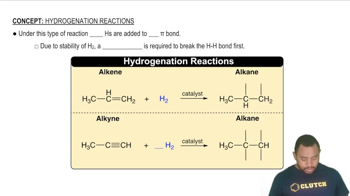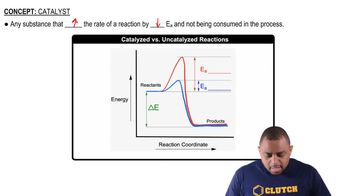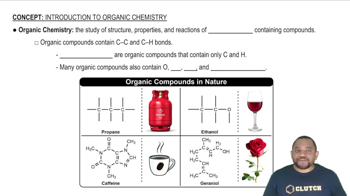Here are the essential concepts you must grasp in order to answer the question correctly.
Hydrogenation
Hydrogenation is a chemical reaction that involves the addition of hydrogen (H2) to an unsaturated compound, typically an alkene or alkyne, converting it into a saturated compound. This process is commonly catalyzed by metals such as palladium, platinum, or nickel, which facilitate the breaking of the double or triple bonds in the reactants, allowing hydrogen to bond with the carbon atoms.
Recommended video:
Catalysts in Reactions
Catalysts are substances that increase the rate of a chemical reaction without being consumed in the process. In hydrogenation reactions, catalysts lower the activation energy required for the reaction to occur, enabling the addition of hydrogen to unsaturated hydrocarbons more efficiently. Understanding the role of catalysts is crucial for optimizing reaction conditions and yields in organic chemistry.
Recommended video:
Catalyzed vs. Uncatalyzed Reactions
Saturation of Organic Compounds
Saturation refers to the presence of single bonds between carbon atoms in organic compounds, as opposed to double or triple bonds found in unsaturated compounds. The hydrogenation process transforms unsaturated compounds into saturated ones, which can significantly alter their chemical properties, stability, and reactivity. Recognizing the difference between saturated and unsaturated compounds is essential for predicting the outcomes of hydrogenation reactions.
Recommended video:
Introduction to Organic Chemistry

 Verified step by step guidance
Verified step by step guidance


